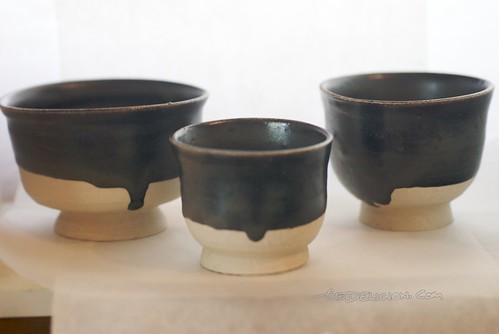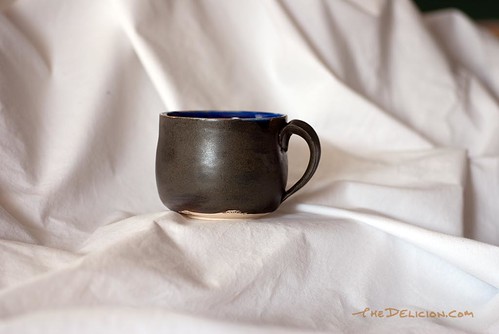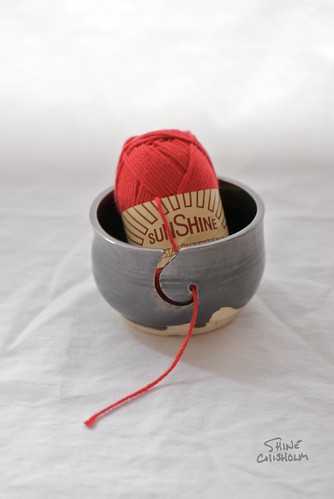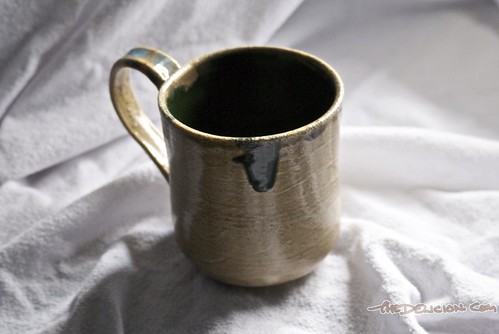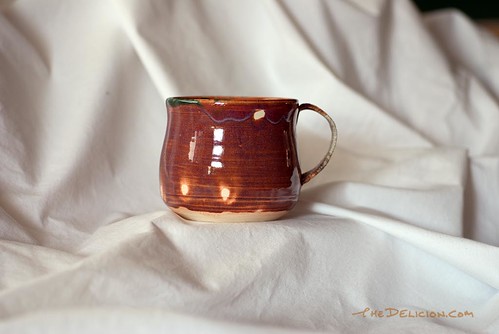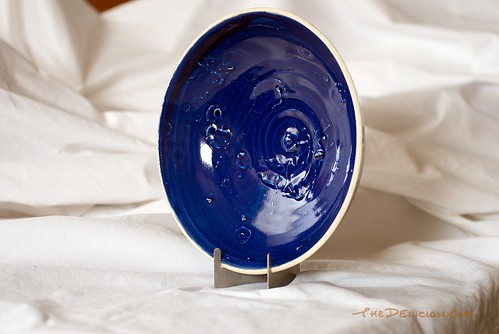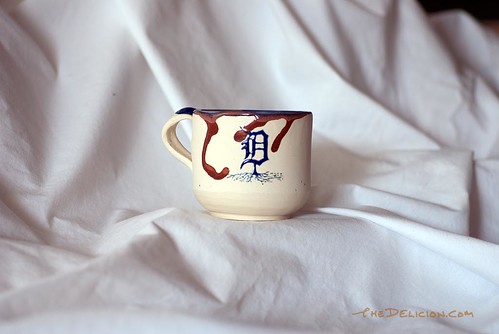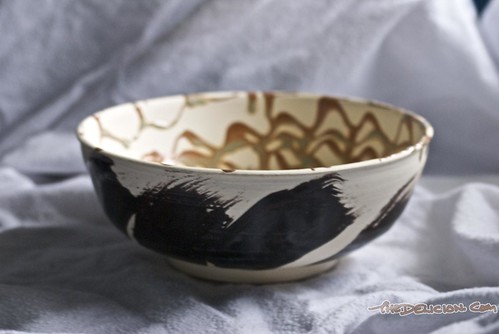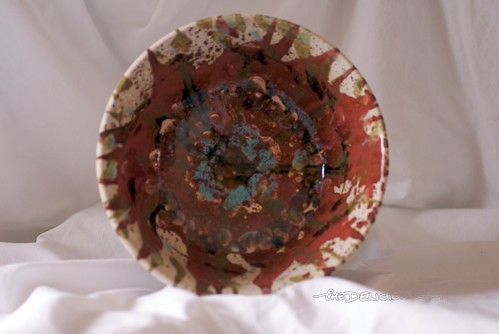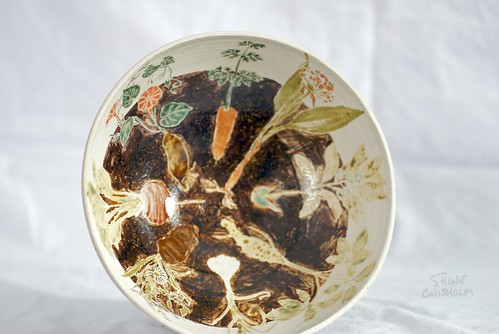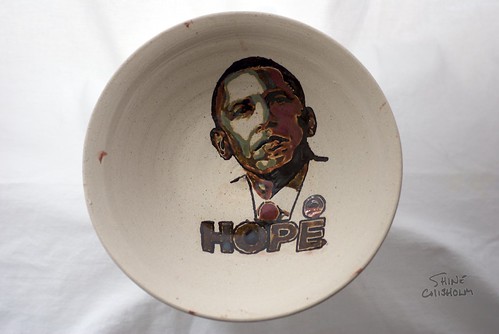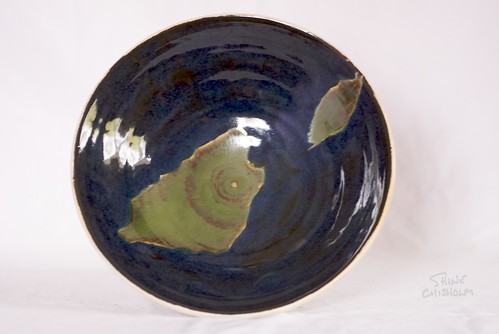Electric Mid&Hi Fired Ceramics
Potters & Sculptors - Making Rock from Mud
Bisque at Cone 10 and then Glaze at Cone 6
Is firing at a higher temperature for bisque than for glaze really that unheard of?
It's the way I was taught and have been firing. I've been working out of my home studio for the past three years, and the ceramists and potters in this area are often downright rude about how I am "doing it wrong."
I like the work I make and people buy and use it. In that sense, I'm not doing it wrong.
It seems like there should be at least some school of thought that coincides with what I was taught. Where is it hiding?
NOTE: Replies are posted from oldest to newest, so the most recent posts will be at the bottom of the last page.
Tags:
Replies to This Discussion
-
Permalink Reply by Shine Chisholm on July 18, 2012 at 2:58am
-
My stuff stands the test of oven, microwave, freezer, and-- for the stoneware-- dishwasher.
-
Permalink Reply by Shine Chisholm on July 18, 2012 at 3:09am
-
I will be honest, in going back through my pictures, I'm very aware of my less-than-stellar feet. regardless, here are some dipped or poured pieces:
I also do a lot of mixed pouring and brush-work. I especially like filling the vessel and pouring out the glaze with an intricate glazed design on the outside.
-
Permalink Reply by Donna Ferrara on July 18, 2012 at 5:13am
-
then it's all good ; )
-
Permalink Reply by Shine Chisholm on July 18, 2012 at 5:46am
-
Thanks, Donna. I like my process. I was feeling a bit lonely, though. The more I interact with other ceramists, the more I am told that I'm wrong. It's wearying.
-
Permalink Reply by Patricia Bridges on July 18, 2012 at 5:57am
-
Thanks, If I didn't know anything about your firing, (based strictly on a technical perspective) I would say there is a problem with your clay and glaze fit and firing temps. On many pieces there are weird textures that are tell tale of that as well as a lot of crawling (glaze not sticking to clay body). If it were non-functional ware I would not be bothered but for functional ware I find it distracting. Just my opinion.
-
Permalink Reply by Shine Chisholm on July 18, 2012 at 7:41am
-
Good to know. I guess since this is the way I've always done it, it's what I've come to expect.
I will have to try reversing my process to see if I like it.
-
Permalink Reply by Donna Ferrara on July 18, 2012 at 7:48am
-
i'm not sure it's a wrong or right issue, just make sure the fit is good
because you are making functional ware
it's a complicated issue, because there are a lot of things to consider
most people start with glazes that are engineered to fit their clay body, theoretically so there will be less problems. but as we all know, once you add in the application of glazes, or the firing and firing cycles into the mix you can have lots of issues. familiarize yourself with what crazing, blistering etc looks like, and examine your ware....
you might have to add additives to your glazes to make them adhere better while glazing
Often after extended use, fit issues can come out....but if you're not experiencing this, then you should be ok
I don't see any difference in what you are doing from the cone 6 potter who accidentally overfires a bisque, and then glazes with cone 6 glazes. or someone who refires their work. it seems to be the same thing. ; )
-
Permalink Reply by Shine Chisholm on July 18, 2012 at 8:08am
-
I have no plans to stop firing my porcelain to cone 10. I am just now reaching a point where it would be beneficial to separate stoneware and porcelain firings, and then I can vary my temperatures more widely.
One of the reasons that this whole issue is so surprising to me is that I am reasonably educated in the area. I am familiar with crazing and blistering-- although apparently not to the degree that I thought I was. I studied studio art, with a focus on ceramics, at the University of Iowa. When I first moved to Detroit, I figured that people in this area just used a different method. After three years doing this professionally, however, I would have expected to find more people who are at least familiar with the process I was taught.
Thanks for the feedback Donna and everyone else. I do appreciate it.
-
Permalink Reply by Victoria Cochran on August 1, 2012 at 7:18pm
-
Firing higher for bisque, than for glaze, is more common with earthenware glazes and not typical in high fire, because of the vitrification issues already mentioned. Many who've worked in earthenware are surprised to find it's done "the opposite way" with midrange and high fire clay bodies.
However, while it's unconventional that you do this for a single color application on a high fire body, in principle, your process (firing high to low) is not "wrong" -- in fact, it's been essential to some pretty snazzy historical pieces and modern ceramics.
Highly decorative work, involving multiple firings, starts with the highest firing, and then progressively adds glazes, overglazes, enamels, china paints and/or lustres in firings that are each incrementally lower, to accommodate the lower temperature of maturity required at each step. An appropriate clay body, and glazes, will tolerate the multiple submaturity firings to successively lower cones.
So yes, if you want to keep the brilliance of those lower maturing glazes, your method is spot on & some pretty smart people have gotten a lot of mileage out of the method.
http://overglaze.demaine.org/?page_id=201
http://allhandmade.net/2010/11/22/lubna-chowdhary-ceramic-artist/
-
Permalink Reply by Shine Chisholm on August 3, 2012 at 11:12am
-
Thank you. Thank you very much.
-
Permalink Reply by Victoria Cochran on April 25, 2013 at 9:39pm
-
The allhandmade link seems to have expired. The information is now here: http://craftedbydesign.wordpress.com/2010/11/22/lubna-chowdhary-cer...
-
Permalink Reply by Kathy Ransom on April 26, 2013 at 8:09am
-
I was given some low fire glazes so I've tried firing to cone 6, often with a cone 6 liner glaze on the inside of mugs, etc, applied the glaze and refired to cone 06. This works really well but the odd cone 6 glaze has come out pitted and changed by the refire, so now I try refiring the glaze on a test tile just to make sure I like the change if there is one.
- ‹ Previous
- 1
- 2
- 3
- Next ›
Videos
Use These Links to Support Us
Low cost flat lapping disc can be used on you potters wheel if you, drill bat pin holes in it, and provide a trickle of water to cool it. At amazon.com, 120 grit for aggressive material removal. Click the image to purchase
Members have had great things to say about John Britt's new book, Mid-Range Glazes. Click the image to buy from Amazon.com
Purchase Glazes Cone 6 by Michael Bailey, The Potters Book of Glaze Recipes by Emmanuel Cooper, or Making Marks by Robin Hopper, all available at amazon.com. Mastering Cone 6 Glazes by John Hesselberth & Ron Roy is now out of print.
Harbor Freight is a great place to find unbeatable prices for better HVLP spray guns with stainless steel parts and serviceable economy models, as well as detail guns, all tested by our members for spraying glazes, as well as compressors to power the guns. As yet no one has tested and commented on the remarkably inexpensive air brushes at harbor freight.
The critter siphon gun is a spray alternative that is well liked by some of our members, and is available at amazon.
Amazon is also a competitive source for photo light tents for shooting professional quality pictures of your work. They also have the EZ Cube brand favored by several of our members. You might also want to purchase the book Photographing Arts, Crafts and Collectibles . . .
If you are up to creating videos of your work or techniques you might want to invest in a flip video camera
Following are a few scales useful for potters. Ohaus Triple Pro Mechanical Triple Beam Balance, 2610g x 0.1g, with Tare $169.00
And finally a low cost clone of the OHaus. The Adam Equipment TBB2610T Triple Beam Mechanical Balance With Tare Beam $99.62
ebay is a great alternative for many tools and the equipment used in the ceramics studio - kilns, wheels, extruders, slab rollers are often listed there both new and used.
Tips for Members
If you just want to spout off, it is best accomplished as a blog posting. If you want to get more guidance and ideas from other members, ask a question as a new discussion topic. In the upper right corner of the lists for both types of posting, you will find an "+Add " button. Clicking it will open an editor where you create your posting. 4/16/2014
© 2026 Created by Andrea Wolf.
Powered by
![]()
